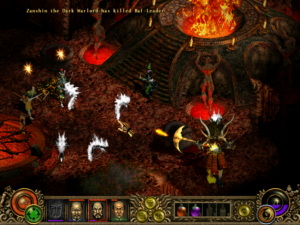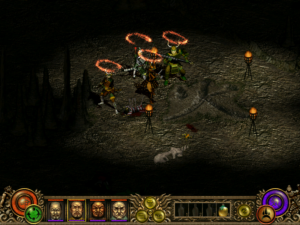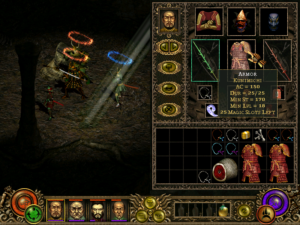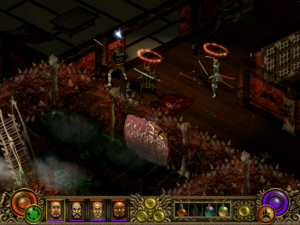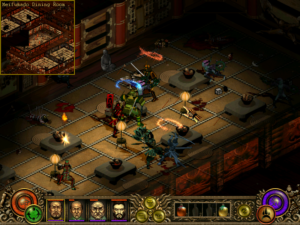Pokémon: The difficulties of resuming play
I’ve been slowly easing myself back into this game. Refamiliarlizing myself with the combat mechanics didn’t take long. It’s pretty simple: first, you choose one of the pokémon that you’re carrying with you at the moment (you can carry at most six at a time); if you’re facing another trainer rather than a solitary wild pokémon, he does the same. Then, in each round of combat, both sides choose an attack, and watch the results. Every attack, even the mundane ones equivalent to throwing a punch, can only be used so many times per sally, like D&D spells. All pokémon are, in effect, magic users.
A more difficult issue is trying to remember where I’ve been and what I’ve done. Up to a certain point, the game is linear, providing a single clear path ahead and a single subquest at every juncture. I’m well past that point. It pretty much ends the moment you teach one of your flying pokémon to carry you from town to town. Still, in my current state, wandering over my traces is no bad thing. I’m still trying to level up my weaker pokémon, after all. Not so much because I want to use them in battle — the ones I’ve already levelled up can pretty much take care of that — but because I want them to “evolve”. You see, some kinds of pokémon go through multi-stage life cycles, with each stage counting as a separate type of pokemon. A squirtle, for example, turns into a wartortle at level 16, and then into a blastoise at level 36. The magikarp, the booby-prize of pokémon, famous for its complete uselessness in battle, possessing at the beginning only a “splash” attack that never does any damage, transforms at level 20 into a gyarados, one of the most fearsome creatures in the game, capable of learning the “dragon rage” attack. “Evolution” is a clever trick that the game designer uses to make the player voluntarily use many different pokémon, with different capabilities, rather than settling on a single favorite. But it also means lots of grind as you try to level everything up evenly.
Another obstacle to picking up from where I left off is simply remembering all the pokémon. Twice already I’ve seen what I believed to be a previously-unseen variety in the wild, only to discover after catching it that I already had one in my collection. I suppose I should write these things down rather than rely on the lists available in the game, which can’t be accessed during an encounter. I’ve kind of made this unnecessarily hard for myself, too, by giving all my pokémon names. Whenever you catch a pokémon, you’re given the option of naming it. I get the impression that most people don’t bother, calling their pokemon solely by their species name like in the cartoon, but it seems like it would be useful if you decided to catch multiple individuals of the same species. I’m not doing that — not deliberately, anyway — but I give my pokémon names anyway. It just seemed more proper that way. So I’ve got Godwin the Wartortle, Sheridan the Butterfree, Blenkinsop the Alakazam, Vivien the Snorlax, Morgoth the Pikachu, and so forth. But even ignoring that, I currently have 61 pokemon in my collection, and I don’t remember what they all do. But I imagine I’ll get used to them all again as I trot them out and give them their five minutes in the arena. Pokémon is one of those games that’s also a body of knowledge. The more you play, the deeper that knowledge goes into your brain.
 Comments(3)
Comments(3)